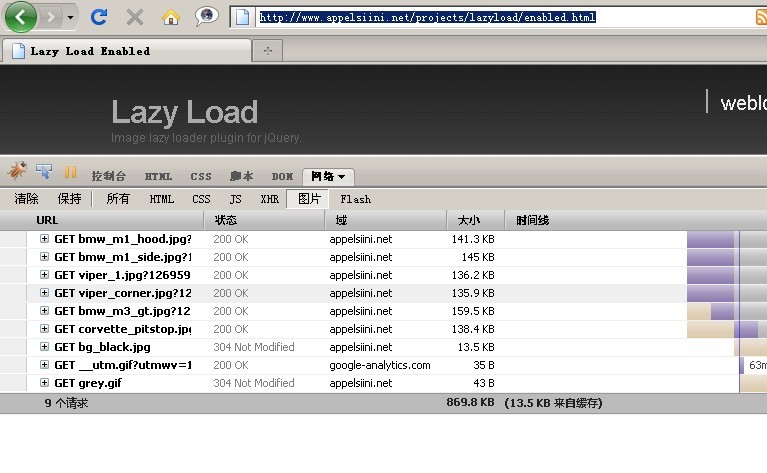
Taobao, QQ, Dangdang, Amazon and other websites all have this effect. The principle is to load images in sections, which is mainly used for large websites to save bandwidth. However, the things they provide are compressed and confusing, and some of them require Based on some Yahoo library, it is very troublesome in short. JQ's control is clear enough, but it still does not achieve the effect of saving network bandwidth, so I made some improvements on the JQ lazy loading control. The biggest feature after the improvement is It is easy to call, does not require many changes in the project, and the JS file is not large. (Worker of Paopao.com! Please indicate the source for reprinting, thank you)
1. To develop controls for Paobu.com, I originally wanted to use JQ’s delay control directly, but JQ’s delay control only speeds up the loading speed and does not save bandwidth. That is to say, JQ’s lazy loading does not actually increase the image transmission volume. I don’t understand. I would like to ask you to DOWN the code and then accept it
{http://www.appelsiini.net/projects/lazyload This is the original JQ Download address of the control}
2. Pay attention to the usage of this control.
1. Quote JQ:

 How to modify the text in the picture
How to modify the text in the picture
 What to do if the embedded image is not displayed completely
What to do if the embedded image is not displayed completely
 How to make ppt pictures appear one by one
How to make ppt pictures appear one by one
 How to make a round picture in ppt
How to make a round picture in ppt
 Solution to computer display error code 651
Solution to computer display error code 651
 What are the data conversion methods in golang?
What are the data conversion methods in golang?
 Detailed explanation of nginx configuration
Detailed explanation of nginx configuration
 How to change devc++ to Chinese
How to change devc++ to Chinese
 close port
close port




